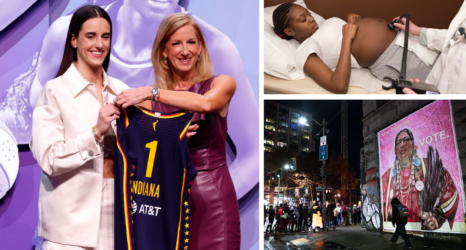Full employment—or an unemployment rate below 3.5 percent—is a great step towards economic recovery, but is not enough to fully protect women workers.

For women and Black and brown workers, the last two months have brought a welcome and overdue policy shift: a renewed focus on full employment.
Bucking a decades-long, bipartisan belief that policymakers should prize low inflation above all else, Biden’s economic team is instead prioritizing returning unemployment to 3.5 percent—a rate once considered unnaturally low, but which the nation reached just before the pandemic, thus redefining conventional wisdom of what “full” even means in the 2020s.
This is great news for women workers, Black and brown workers, and other workers who face routine wage discrimination and experience the worst of weak labor markets. Case in point: In the immediate aftermath of the Great Recession, when unemployment rates remained high, wages for high-paid workers rose faster than wages for low-paid workers, and the wage gap for white and Black workers grew. In 2016, as the unemployment rate fell, those wage gaps began to close.
With that lesson learned, and full employment both a fiscal and monetary goal, policymakers and advocates must now internalize the complicated history of full-employment legislation—and what it has meant for women.
The Full Employment Debate: A Feminist History
Throughout the 1970s, Congress debated legislation that would have made full employment (defined as 3 percent unemployment) the goal of federal fiscal, monetary and social policy. At the time, feminists understood full employment legislation as an important step in addressing the economic disadvantages women faced.
But they were careful to emphasize that it would not be sufficient. Without strong anti-discrimination policies and affirmative action guidelines to bring women into nontraditional fields, full-employment legislation would not advance feminist goals.
As written and amended, the main full-employment bill under debate favored men. Early drafts guaranteed a public service job to any individual who wanted to work and could not find a position. (This promise had much in common with the jobs guarantee proposals many progressives have made recently.) During the amendment process, this guarantee was qualified so that administrators would have been instructed to allocate one job per household, prioritizing men.
These amendments took a page straight from New Deal relief and employment programs, which centered the idea of a “family wage.” Their goal was to support men at a level that would support their wives and children so that women could stay out of the work force.
Despite pushback from both single and married women in the work force, in the end, this belief underlay the structure of almost all New Deal programs—from the 1933 Economy Act, which forbade the federal government from hiring members of the same family (effectively leading many women to lose their jobs); to Social Security, which offered married men a dependent benefit for their wives, but in doing so, erased married women’s own earnings in the labor force.
From the New Deal into the 1970s and beyond, the policy assumption of a breadwinner-homemaker family structure was particularly pernicious for Black women.
Pervasive wage and employment discrimination meant that Black men could rarely support their families on their income alone. Black women were more likely to be in the work force than white women, and also more likely to hold jobs deliberately excluded from the New Deal social safety net, particularly domestic work.
By 1974, when full-employment legislation was being debated, over half of adult Black women were members of the civilian labor force, compared to only 44 percent of white women. But Black women’s unemployment rate—the percent of the labor force actively seeking work but unable to find it—was almost twice that of white women.
In the 1970s, Black women in Congress were strong supporters of full-employment legislation, but, recognizing the unique position Black women held in the labor market, they demanded more than the anti-discrimination policies many feminist groups championed as protection for women. For example, California Congresswoman Yvonne Brathwaite-Burke—knowing that flexible schedules were essential for women trying to balance home and job responsibilities—championed legislation to increase part-time employment opportunities in the federal government. Additional bills sponsored by Brathwaite-Burke offered specific work force training opportunities to women who had lost their husband through death or divorce.
Looking Ahead
As policymakers target full employment once again, they can and must learn this important lesson from Burke and her colleagues: Full employment is a necessary but by no means sufficient condition for economic equality.
As has been well-documented during this pandemic, women and men interact with the economy differently. Because of occupational segregation and caregiving obligations, women have been forced out of the work force at a higher rate than men. For new full-employment policies to serve women, they must proactively address these and other obstacles.
To boost economic equity, opportunity, wages and working conditions for women, we must accompany full-employment policies with policies that strengthen bans on discrimination and make the work force more accommodating to those with family responsibilities.
You may also like:





